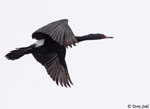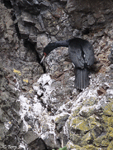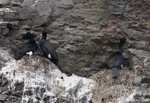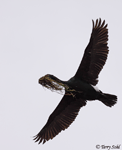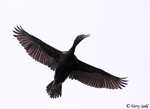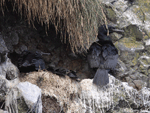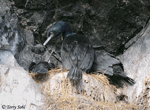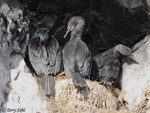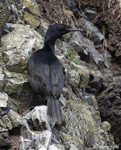| Length: 28 inches | Wingspan: 40 inches | Seasonality: Non-resident in South Dakota |
| ID Keys: Black overall, smallest cormorant, dark thin bill, breeding adults have dark-red gular patch on face | ||
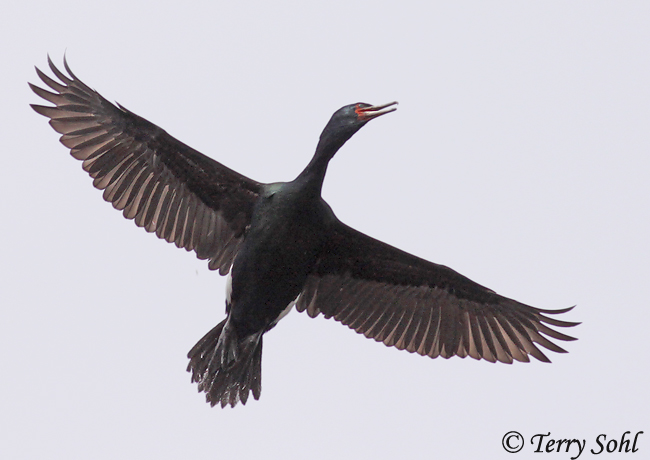 The
Pelagic Cormorant is the smallest and lightest of the North American
cormorants. They breed from California all the way to the Aleutian
Islands and west coast of Alaska, and can usually be found in most of the
same range in winter, provided it is ice-free. They are very similar
to the Red-faced Cormorant, a species found just in the Alaska portion of
the Pelagic Cormorant's range.
The
Pelagic Cormorant is the smallest and lightest of the North American
cormorants. They breed from California all the way to the Aleutian
Islands and west coast of Alaska, and can usually be found in most of the
same range in winter, provided it is ice-free. They are very similar
to the Red-faced Cormorant, a species found just in the Alaska portion of
the Pelagic Cormorant's range.
Habitat: Breeds on offshore islands and rocky cliffs. Outside of the nesting period, they are usually found relatively close to the coastline, although occasionally they can be found well out to sea.
Diet: Feeds mostly on fish, but will also feed on other marine life, including crabs, marine worms, shrimp, and other small creatures.
Behavior: Forages by swimming on the water's surface and diving down to obtain prey, with dives going up to 100 feet or more in depth.
Nesting: Breeds in colonies, but typically smaller colonies than other West Coast cormorant species. The nest is built of grasses, seaweed, and other vegetative material, cemented together with their own waste. Females usually lay between 3 and 5 eggs, and both parents help to incubate them. Upon hatching, both parents feed the nestlings, through regurgitation of fish.
Song: Usually silent away from breeding sites. At the nest site, makes a variety of quiet grunting and hissing sounds.
Migration: Pelagic Cormorants are found year-round in most of their breeding range, but withdraw in winter from the northernmost parts of their range along the western coast of Alaska. Other birds also obviously move southward for the winter, as birds are found in greater numbers in southern California and Baja California in winter than during the breeding season.
Interactive eBird Map: Click here to access an interactive eBird map of Pelagic Cormorant sightings
Similar Species: In range, most likely to be confused with the Red-faced Cormorant, Brandt's Cormorant, or Double-crested Cormorant.
Conservation Status: Populations are likely decreasing, but they are still found across a wide geographic range and are fairly common in some locations. The IUCN lists the Pelagic Cormorant as a species of "Least Concern".
Further Information: 1) Channel Islands National Park - Pelagic Cormorant
2) BirdWeb.org - Pelagic Cormorant
3) Alaska Seabird Information Series - Pelagic Cormorant
Photo Information: Photo taken on June 8th, 2009 - Haystack Rock, Cannon Beach, Oregon - Terry Sohl
| Click below for a higher-resolution map |
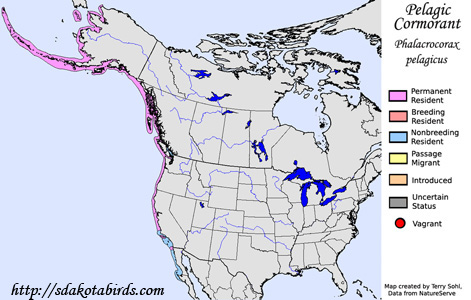 |
| South Dakota Status: Non-resident in South Dakota |
Additional Pelagic Cormorant Photos
Click for a higher-resolution version of these photos
